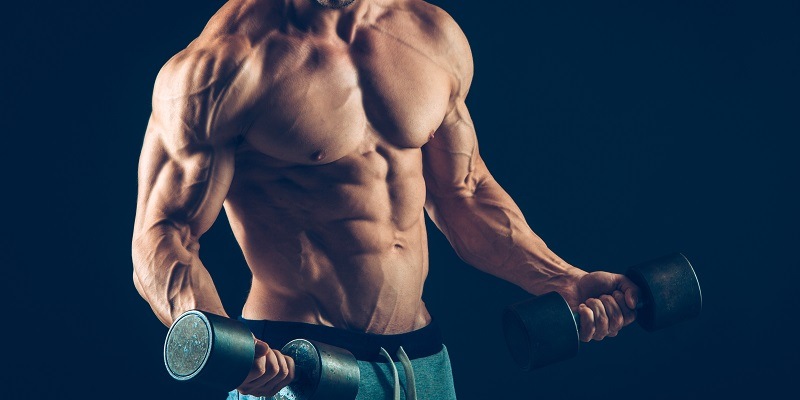Beginners training their biceps and triceps will likely hold a pair of dumbbells in the middle part. This is understandable considering that it seems like the most logical place in terms of maintaining balance. But if you want to make your biceps and triceps workout more challenging and, thus, get better results, then you should try the offset grip.
Off-center Position
Basically, the offset grip means holding the dumbbells one to two inches from the middle with the thumb pressed up against their weight. By adopting an off-center position, you are tipping the balance of the dumbbell’s weight toward one side that, in turn, increases the efficiency of muscle involvement for the various movements.
This principle can be applied on your biceps and triceps workout. For your biceps workout, your thumb should be pressed against the inside of the weight so that your biceps’ short head will be more engaged. For your triceps workout, your little finger (i.e., pinky) should be pressed up against the weight resulting in more challenge during the triceps extension movement, particularly at lockout.
Add More Weight
The fact that one side of the dumbbell becomes slightly heavier is the reasons for its efficiency in biceps and triceps workout. But if you want more challenge, you can also add weight to just one side of the dumbbell while also adopting the offset grip.
You can either add a 2.5-pound weight, in case of a plate-loaded setup, or a magnetic weight. Where you place the added weight depends on the type of offset grip adopted and the type of exercise.
- For curls, the added weight should be placed on the opposite side where your thumb is pressed up against the dumbbell (i.e., on your pinky side).
- For extensions including skull-crushers, the added weight will be on the opposite side where your pinky is pressed up against the dumbbell (i.e., on your thumb side).
You should be able to feel more burn by adding the extra weight and pairing it with an offset grip. You may also give your workouts a twist, literally, for more efficiency.
- In a twisting dumbbell curl, you can twist your wrist when the dumbbell clear your thighs. This simple twisting motion will activate the brachioradialis and supinator muscles as well as the biceps.
- In a twisting triceps extension, you can twist your forearm while raising the weight instead of keeping it in a neutral position. This will boost muscle involvement in the forearm pronator muscles, in the anconeus, and in the triceps.
By changing your grip and adding a small twist, your biceps and triceps workout will produce better results within a faster period! Your fellow gym-goers at Gold’s Gym will likely ask about your secret, too.
